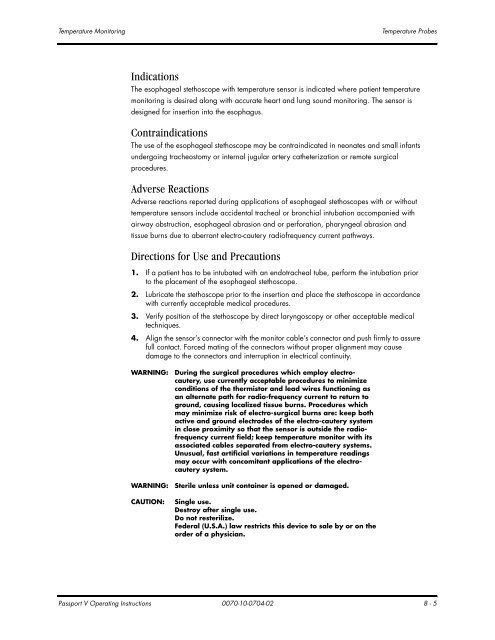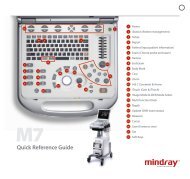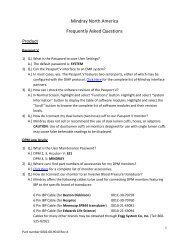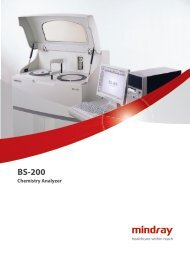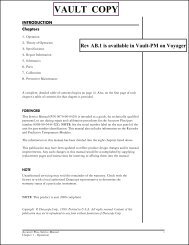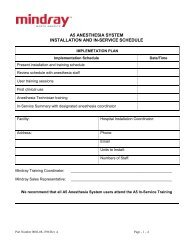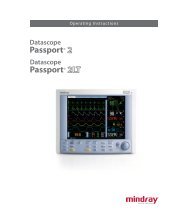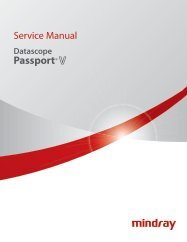Passport® - Mindray
Passport® - Mindray
Passport® - Mindray
- TAGS
- mindray
- res.mindray.com
You also want an ePaper? Increase the reach of your titles
YUMPU automatically turns print PDFs into web optimized ePapers that Google loves.
Temperature Monitoring Temperature Probes<br />
Indications<br />
The esophageal stethoscope with temperature sensor is indicated where patient temperature<br />
monitoring is desired along with accurate heart and lung sound monitoring. The sensor is<br />
designed for insertion into the esophagus.<br />
Contraindications<br />
The use of the esophageal stethoscope may be contraindicated in neonates and small infants<br />
undergoing tracheostomy or internal jugular artery catheterization or remote surgical<br />
procedures.<br />
Adverse Reactions<br />
Adverse reactions reported during applications of esophageal stethoscopes with or without<br />
temperature sensors include accidental tracheal or bronchial intubation accompanied with<br />
airway obstruction, esophageal abrasion and or perforation, pharyngeal abrasion and<br />
tissue burns due to aberrant electro-cautery radiofrequency current pathways.<br />
Directions for Use and Precautions<br />
1. If a patient has to be intubated with an endotracheal tube, perform the intubation prior<br />
to the placement of the esophageal stethoscope.<br />
2. Lubricate the stethoscope prior to the insertion and place the stethoscope in accordance<br />
with currently acceptable medical procedures.<br />
3. Verify position of the stethoscope by direct laryngoscopy or other acceptable medical<br />
techniques.<br />
4. Align the sensor’s connector with the monitor cable’s connector and push firmly to assure<br />
full contact. Forced mating of the connectors without proper alignment may cause<br />
damage to the connectors and interruption in electrical continuity.<br />
WARNING: During the surgical procedures which employ electrocautery,<br />
use currently acceptable procedures to minimize<br />
conditions of the thermistor and lead wires functioning as<br />
an alternate path for radio-frequency current to return to<br />
ground, causing localized tissue burns. Procedures which<br />
may minimize risk of electro-surgical burns are: keep both<br />
active and ground electrodes of the electro-cautery system<br />
in close proximity so that the sensor is outside the radiofrequency<br />
current field; keep temperature monitor with its<br />
associated cables separated from electro-cautery systems.<br />
Unusual, fast artificial variations in temperature readings<br />
may occur with concomitant applications of the electrocautery<br />
system.<br />
WARNING: Sterile unless unit container is opened or damaged.<br />
CAUTION: Single use.<br />
Destroy after single use.<br />
Do not resterilize.<br />
Federal (U.S.A.) law restricts this device to sale by or on the<br />
order of a physician.<br />
Passport V Operating Instructions 0070-10-0704-02 8 - 5


